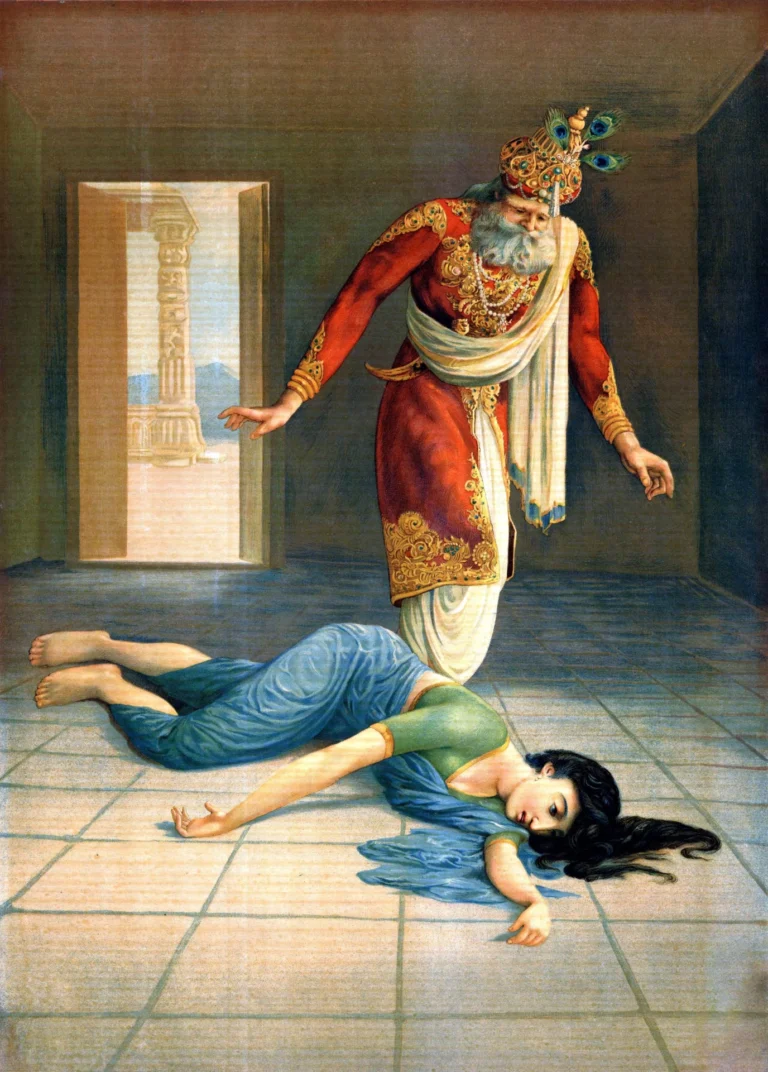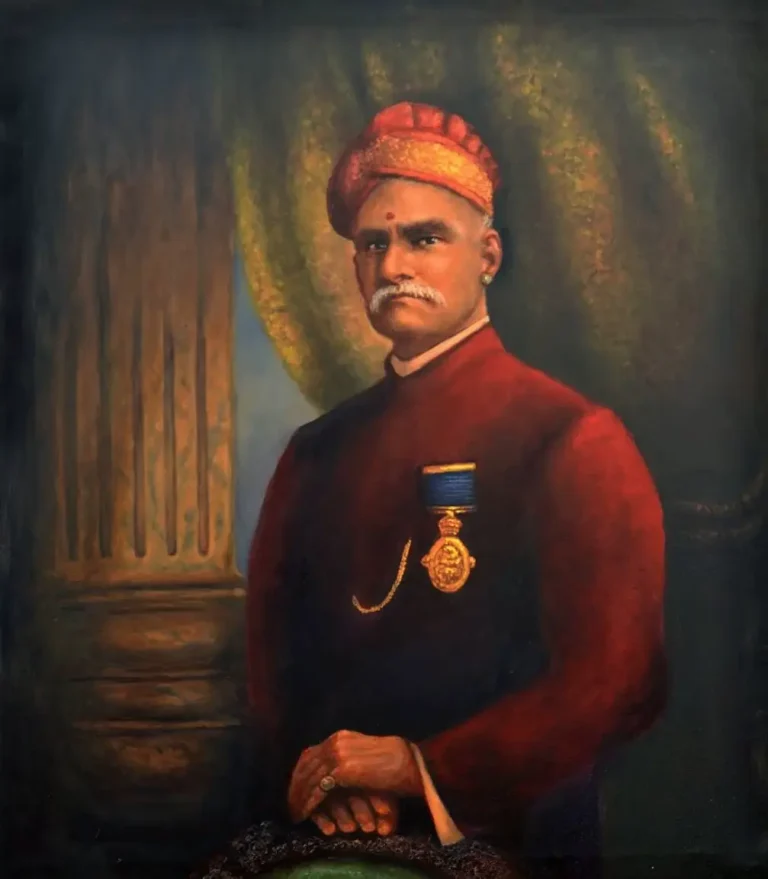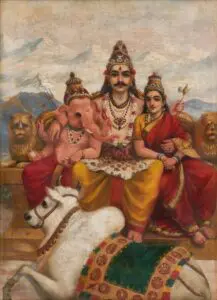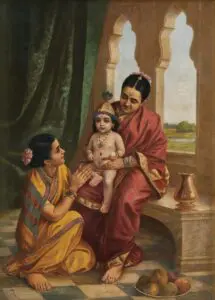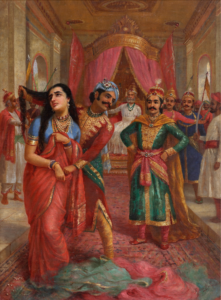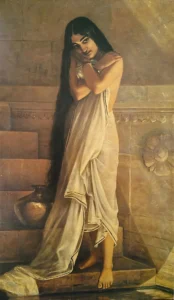Dasharata Kaikeyi Vilap
The artwork Dasharatha Kaikeyi Vilap illustrates a dramatic moment from the Hindu epic, the Ramayana. It features Kaikeyi, one of King Dasharatha's wives, demanding the exile of their son Rama. Although not painted directly by Raja Ravi Varma, the image is based on his original oil painting and produced as a print by the Ravi Varma Press. This print is a testament to Varma's commitment to making Indian art accessible, reflecting the rich cultural narratives within the epic tale.
Early 1900s, around 1910
About the Artwork
The tale of Dasharatha Kaikeyi Vilap is steeped in the rich cultural narrative of the Ramayana, where Kaikeyi's demand for Rama's exile results in profound consequences. This poignant scene captures the emotional turmoil experienced not only by Kaikeyi but also by King Dasharatha, as familial loyalty and duty clash. Raja Ravi Varma’s press played a pivotal role in disseminating this artwork, making such mythological narratives accessible to a wider audience after his death in 1906. Through this print, Varma ensured the continuation of storytelling through art, highlighting the profound socio-cultural implications embedded in Indian mythology.
Did You Know
Raja Ravi Varma is celebrated for bridging the gap between Indian mythology and Western art styles. His works are credited with inspiring a new generation of Indian artists that followed.
The Ramayana is one of India’s two major ancient epics, and its themes of duty, morality, and devotion have profoundly influenced Indian culture, making artworks like Dasharatha Kaikeyi Vilap rich with historical significance.
Founded by Raja Ravi Varma, the Ravi Varma Press played a crucial role in popularizing Indian art through mass production of prints, facilitating the distribution of Indian culture to a broader audience.





